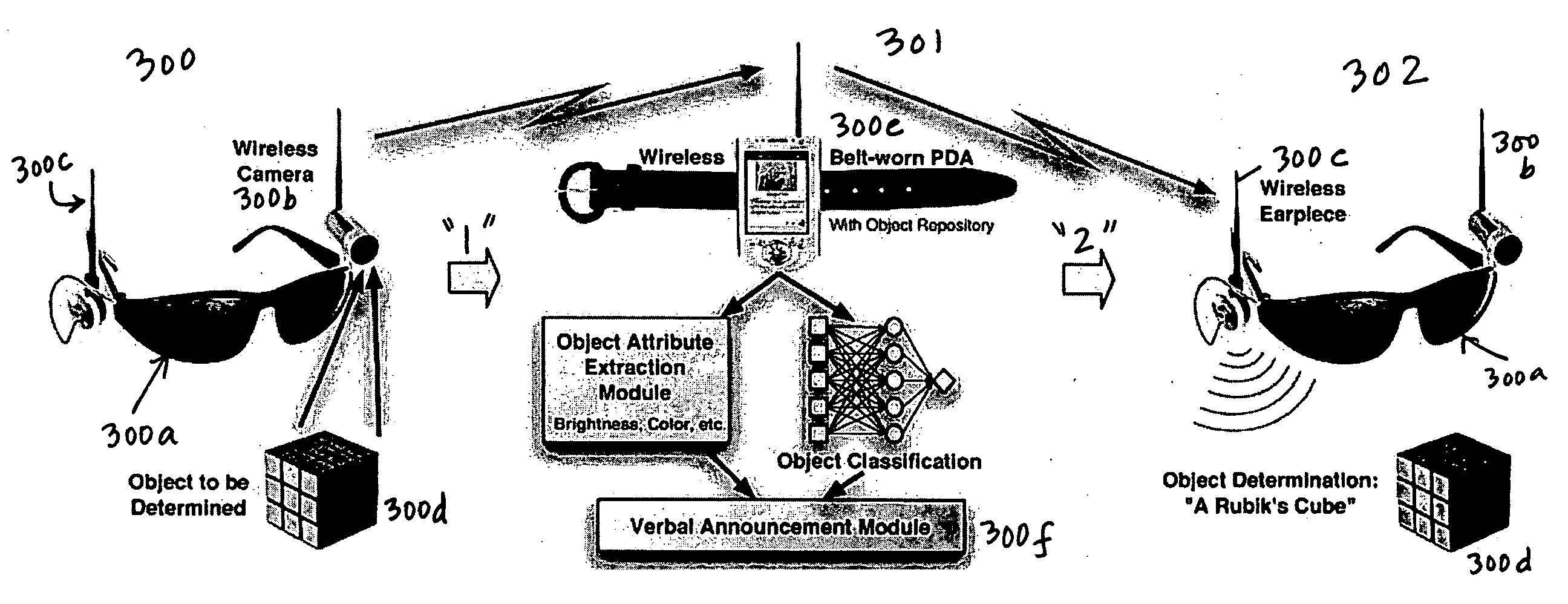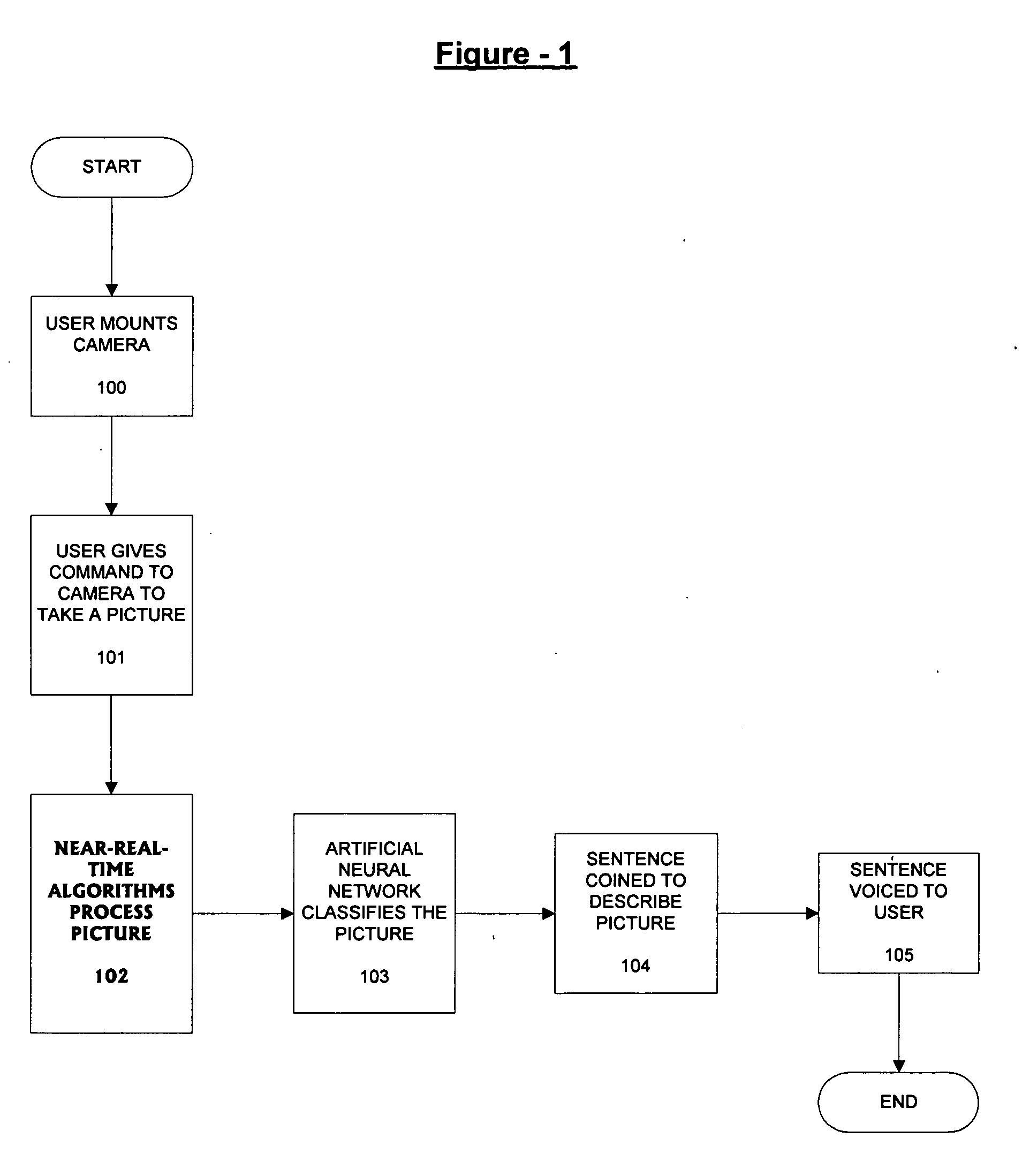Digital object recognition audio-assistant for the visually impaired
a technology for visual impairment and audio-assistant, applied in the field of object recognition, can solve problems such as guide dogs not being able to identify certain objects, limited choices for visually impaired people, and difficulty in changing environmental conditions
- Summary
- Abstract
- Description
- Claims
- Application Information
AI Technical Summary
Benefits of technology
Problems solved by technology
Method used
Image
Examples
Embodiment Construction
[0014] A camera-based object detection system for the severely visually impaired or blind person is described. In the following description, numerous details are set forth in order to provide a more thorough description of the present invention. It will be apparent, however, to one skilled in the art, that the present invention may be practiced without these specific details. In other instances, well known features have not been described in detail so as not to unnecessarily obscure the present invention.
Overview
[0015] A camera, such as a digital camera, is mounted on the person's eyeglass or head. According to one embodiment, the view of the camera is preferably aligned with the view the person would get if he / she were not blind or visually impaired. According to another embodiment, the camera takes snap shots on demand, for example, at the push of a button by the user or a voice command. After the image is captured, it is provided to a processor for analysis. The processor uses...
PUM
 Login to View More
Login to View More Abstract
Description
Claims
Application Information
 Login to View More
Login to View More - R&D
- Intellectual Property
- Life Sciences
- Materials
- Tech Scout
- Unparalleled Data Quality
- Higher Quality Content
- 60% Fewer Hallucinations
Browse by: Latest US Patents, China's latest patents, Technical Efficacy Thesaurus, Application Domain, Technology Topic, Popular Technical Reports.
© 2025 PatSnap. All rights reserved.Legal|Privacy policy|Modern Slavery Act Transparency Statement|Sitemap|About US| Contact US: help@patsnap.com



